A conserved dendritic-cell regulatory program limits antitumour immunity
- PMID: 32269339
- PMCID: PMC7787191
- DOI: 10.1038/s41586-020-2134-y
A conserved dendritic-cell regulatory program limits antitumour immunity
Erratum in
-
Author Correction: A conserved dendritic-cell regulatory program limits antitumour immunity.Nature. 2020 Jun;582(7813):E17. doi: 10.1038/s41586-020-2326-5. Nature. 2020. PMID: 32499658
Abstract
Checkpoint blockade therapies have improved cancer treatment, but such immunotherapy regimens fail in a large subset of patients. Conventional type 1 dendritic cells (DC1s) control the response to checkpoint blockade in preclinical models and are associated with better overall survival in patients with cancer, reflecting the specialized ability of these cells to prime the responses of CD8+ T cells1-3. Paradoxically, however, DC1s can be found in tumours that resist checkpoint blockade, suggesting that the functions of these cells may be altered in some lesions. Here, using single-cell RNA sequencing in human and mouse non-small-cell lung cancers, we identify a cluster of dendritic cells (DCs) that we name 'mature DCs enriched in immunoregulatory molecules' (mregDCs), owing to their coexpression of immunoregulatory genes (Cd274, Pdcd1lg2 and Cd200) and maturation genes (Cd40, Ccr7 and Il12b). We find that the mregDC program is expressed by canonical DC1s and DC2s upon uptake of tumour antigens. We further find that upregulation of the programmed death ligand 1 protein-a key checkpoint molecule-in mregDCs is induced by the receptor tyrosine kinase AXL, while upregulation of interleukin (IL)-12 depends strictly on interferon-γ and is controlled negatively by IL-4 signalling. Blocking IL-4 enhances IL-12 production by tumour-antigen-bearing mregDC1s, expands the pool of tumour-infiltrating effector T cells and reduces tumour burden. We have therefore uncovered a regulatory module associated with tumour-antigen uptake that reduces DC1 functionality in human and mouse cancers.
Conflict of interest statement
Figures

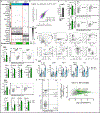


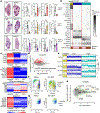
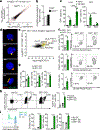
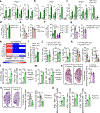
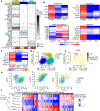
Comment in
-
A Previously Unknown Dendritic Cell Type Reduces Antitumor Response.Cancer Discov. 2020 May;10(5):636. doi: 10.1158/2159-8290.CD-RW2020-051. Epub 2020 Apr 3. Cancer Discov. 2020. PMID: 32245823
References
-
- Sánchez-Paulete AR et al. Intratumoral immunotherapy with XCL1 and sFlt3L encoded in recombinant Semliki Forest Virus-derived fosters dendritic cell-mediated T-cell cross-priming. Cancer Res. 78, 6643–6654 (2018). - PubMed
Publication types
MeSH terms
Substances
Grants and funding
LinkOut - more resources
Full Text Sources
Other Literature Sources
Medical
Molecular Biology Databases
Research Materials
Miscellaneous

